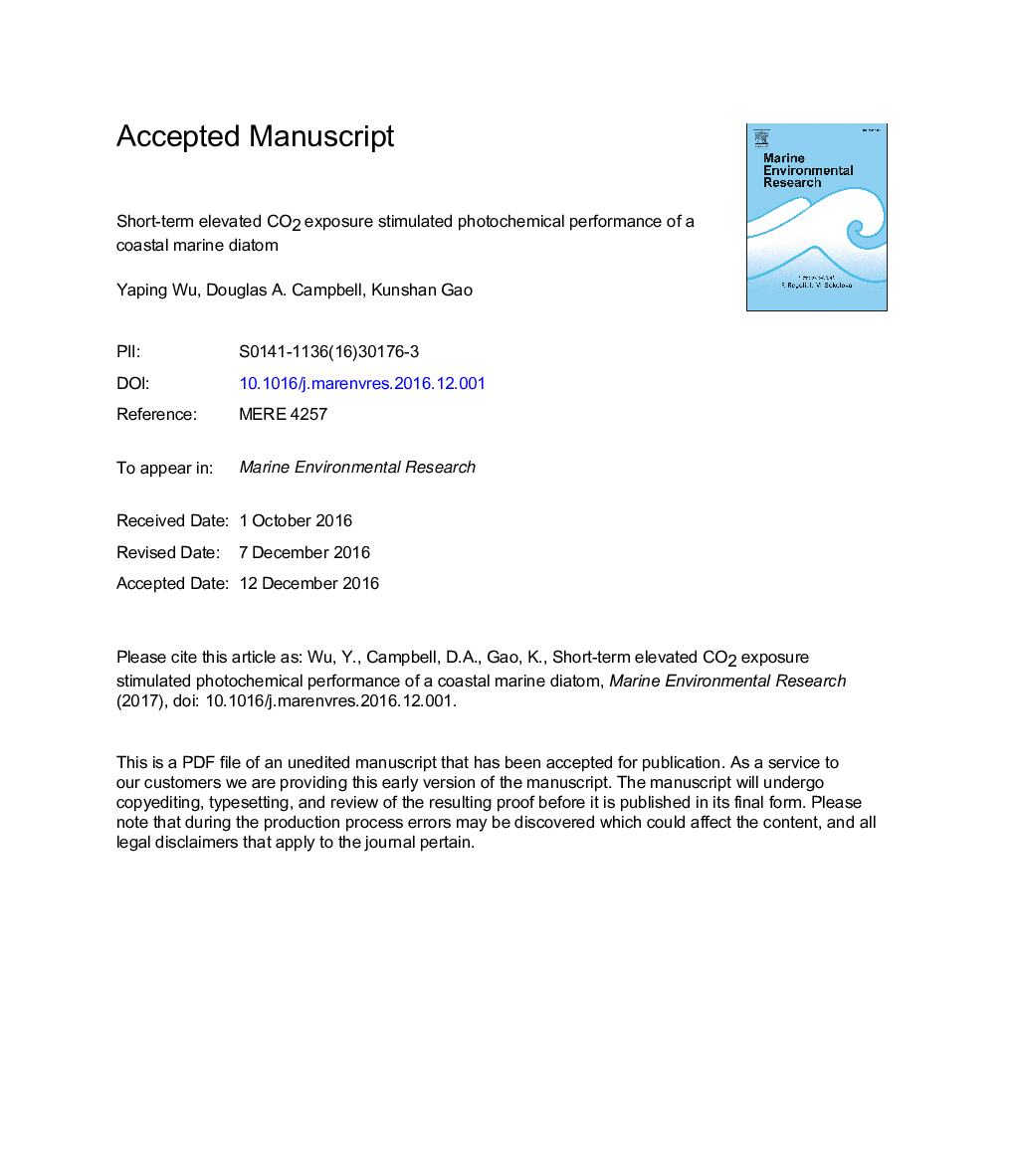| Article ID | Journal | Published Year | Pages | File Type |
|---|---|---|---|---|
| 5766229 | Marine Environmental Research | 2017 | 26 Pages |
Abstract
Ocean acidification changes seawater chemistry, with increased CO2 and decreased pH regarded as the most important factors that impact marine organisms. This study employed an unconventional methodology to distinguish the independent effects of pH versus CO2. Changes in CO2 dominated the photochemical responses of the coastal diatom Phaeodactylum tricornutum to short-term ocean acidification. Increased CO2 lowered non-photochemical quenching of excitation and stimulated the electron transport rates of photosynthesis, with the largest effects on both parameters when CO2 and pH were altered simultaneously. Changes in pH alone did not show significant effects upon non-photochemical quenching (NPQ) nor upon electron transport rates, but can synergistically amplify CO2 effects under low light. Maximal induction of NPQ after illumination showed only a limited response to increasing CO2 under stable pH, across a range of increasing light levels, but maximal induced NPQ declined rapidly with increasing CO2 under variable pH, when measured under exposure to sub-saturating light, but not under saturating light. These findings show that aqueous CO2 and pH affect different physiological processes independently or interactively, which should be taken into account in future research for better understanding of responses to ocean acidification at the mechanistic level.
Related Topics
Physical Sciences and Engineering
Earth and Planetary Sciences
Oceanography
Authors
Yaping Wu, Douglas A. Campbell, Kunshan Gao,
